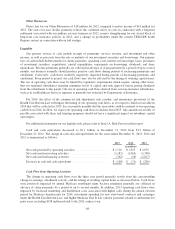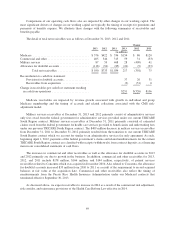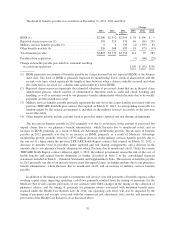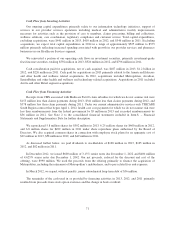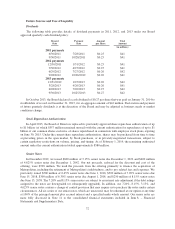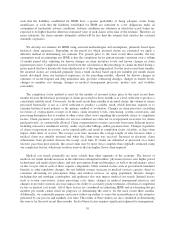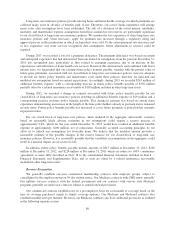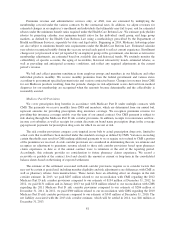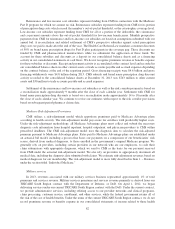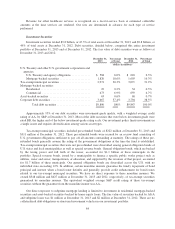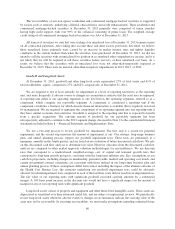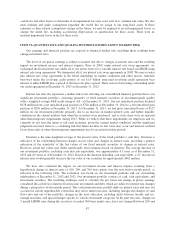Humana 2013 Annual Report Download - page 88
Download and view the complete annual report
Please find page 88 of the 2013 Humana annual report below. You can navigate through the pages in the report by either clicking on the pages listed below, or by using the keyword search tool below to find specific information within the annual report.
The following table summarizes the changes in estimate for incurred claims related to prior years
attributable to our key assumptions. As previously described, our key assumptions consist of trend and
completion factors estimated using an assumption of moderately adverse conditions. The amounts below
represent the difference between our original estimates and the actual benefits expense ultimately incurred as
determined from subsequent claim payments.
Favorable Development by Changes in Key Assumptions
2013 2012 2011
Amount
Factor
Change (a) Amount
Factor
Change (a) Amount
Factor
Change (a)
(dollars in millions)
Trend factors ....................... $(233) (3.4)% $(138) (2.4)% $(189) (3.8)%
Completion factors .................. (241) 1.2% (119) 0.7% (183) 1.2%
Total ......................... $(474) $(257) $(372)
(a) The factor change indicated represents the percentage point change.
As previously discussed, our reserving practice is to consistently recognize the actuarial best estimate of our
ultimate liability for claims. Actuarial standards require the use of assumptions based on moderately adverse
experience, which generally results in favorable reserve development, or reserves that are considered redundant.
We experienced favorable medical claims reserve development related to prior fiscal years of $474 million in
2013, $257 million in 2012, and $372 million in 2011. The table below details our favorable medical claims
reserve development related to prior fiscal years by segment for 2013, 2012, and 2011.
Favorable Medical Claims Reserve
Development Change
2013 2012 2011 2013 2012
(in millions)
Retail Segment ................................... $(347) $(192) $(245) $(155) $ 53
Employer Group Segment .......................... (128) (48) (114) (80) 66
Other Businesses ................................. 1 (17) (13) 18 (4)
Total ........................................... $(474) $(257) $(372) $(217) $115
The favorable medical claims reserve development for 2013, 2012, and 2011 primarily reflects the
consistent application of trend and completion factors estimated using an assumption of moderately adverse
conditions. In addition, the favorable medical claims reserve development during 2013 reflects better than
originally expected utilization across most of our major business lines and increased financial recoveries. The
increase in financial recoveries primarily resulted from claim audit process enhancements as well as increased
volume of claim audits and expanded audit scope. All lines of business benefitted from these improvements.
Favorable development during 2011 reflects improvements in the claims processing environment and, to a lesser
extent, better than originally estimated utilization. The improvements during 2011 resulted from increased audits
of provider billings as well as system enhancements that improved claim recovery functionality.
We continually adjust our historical trend and completion factor experience with our knowledge of recent
events that may impact current trends and completion factors when establishing our reserves. Because our
reserving practice is to consistently recognize the actuarial best point estimate using an assumption of moderately
adverse conditions as required by actuarial standards, there is a reasonable possibility that variances between
actual trend and completion factors and those assumed in our December 31, 2013 estimates would fall towards
the middle of the ranges previously presented in our sensitivity table.
78


